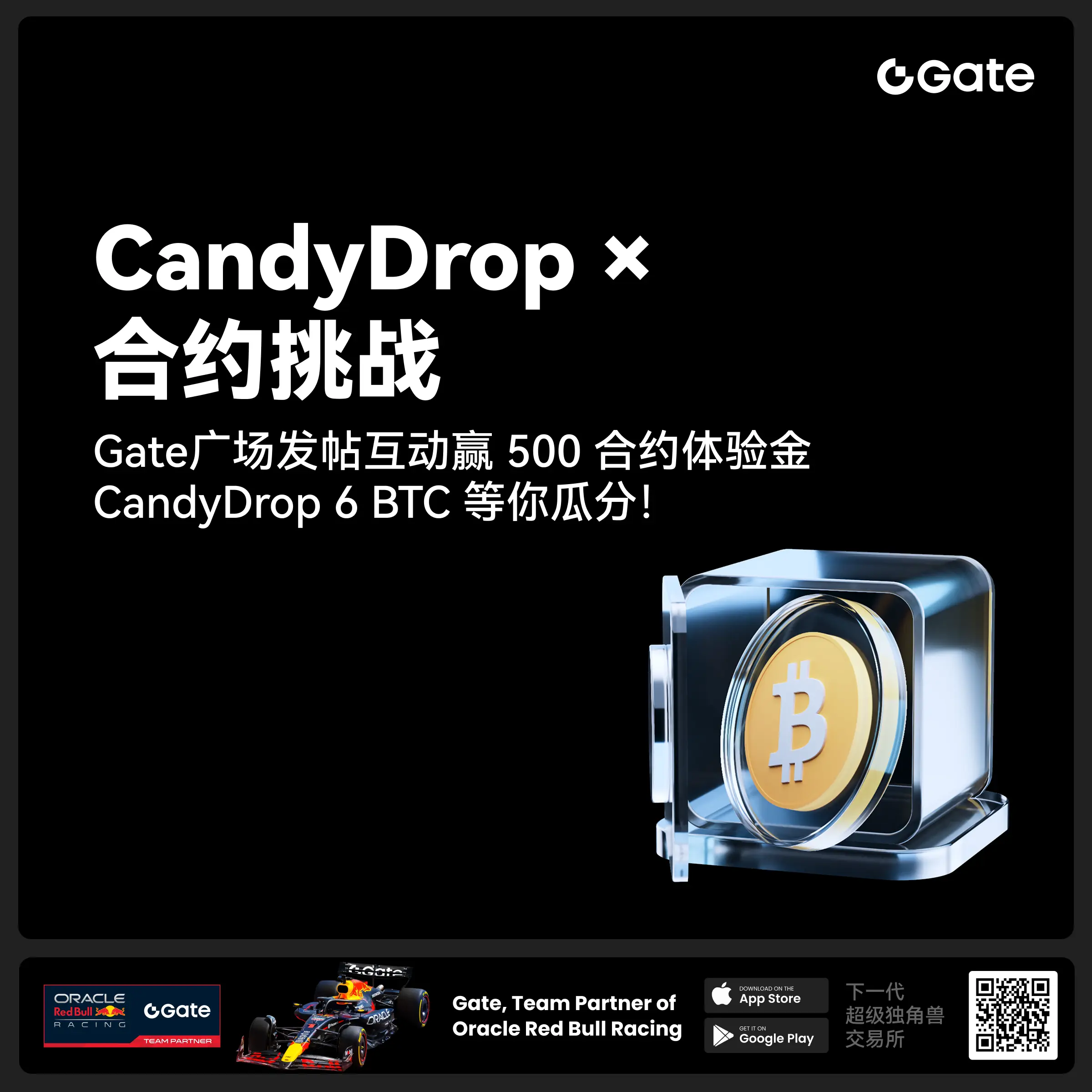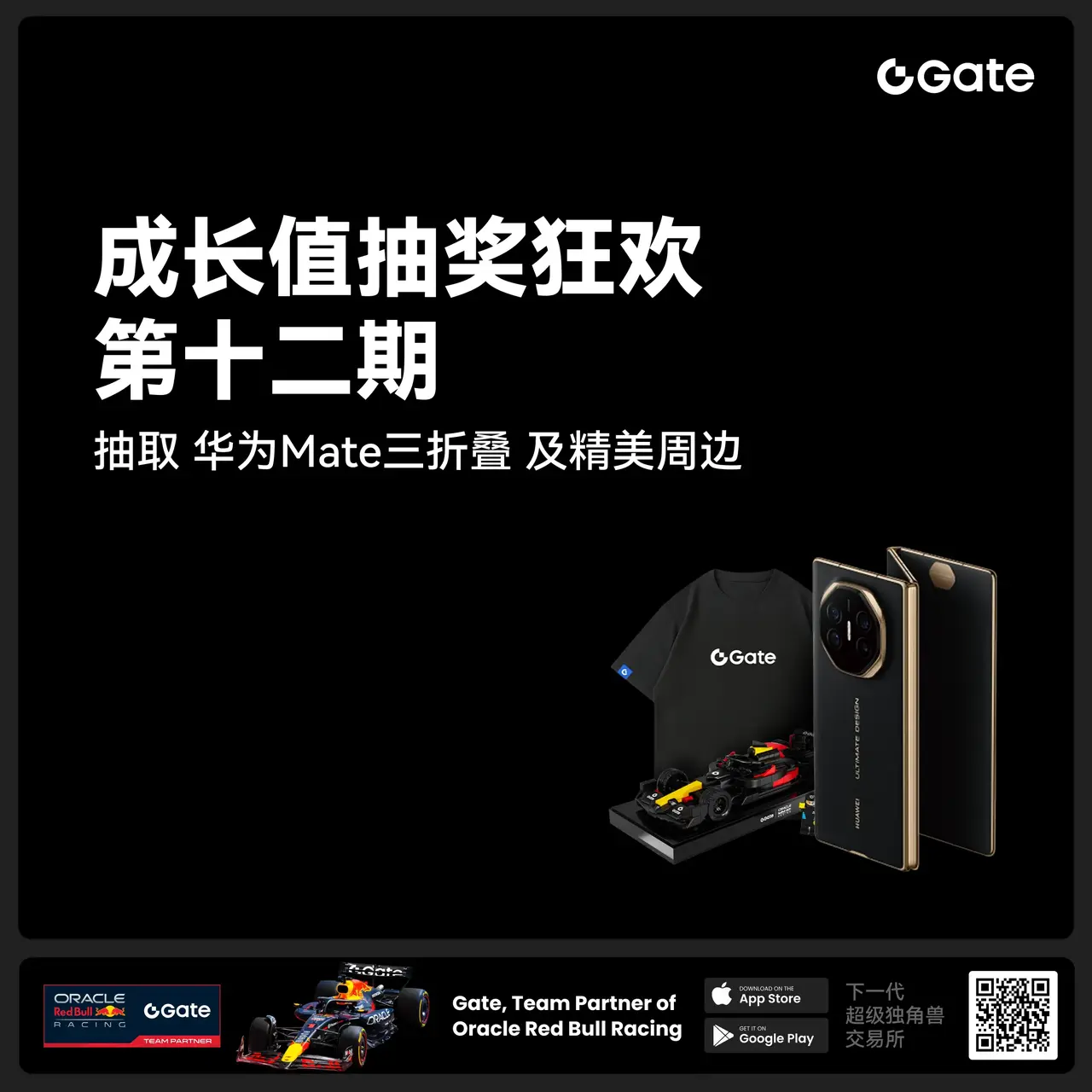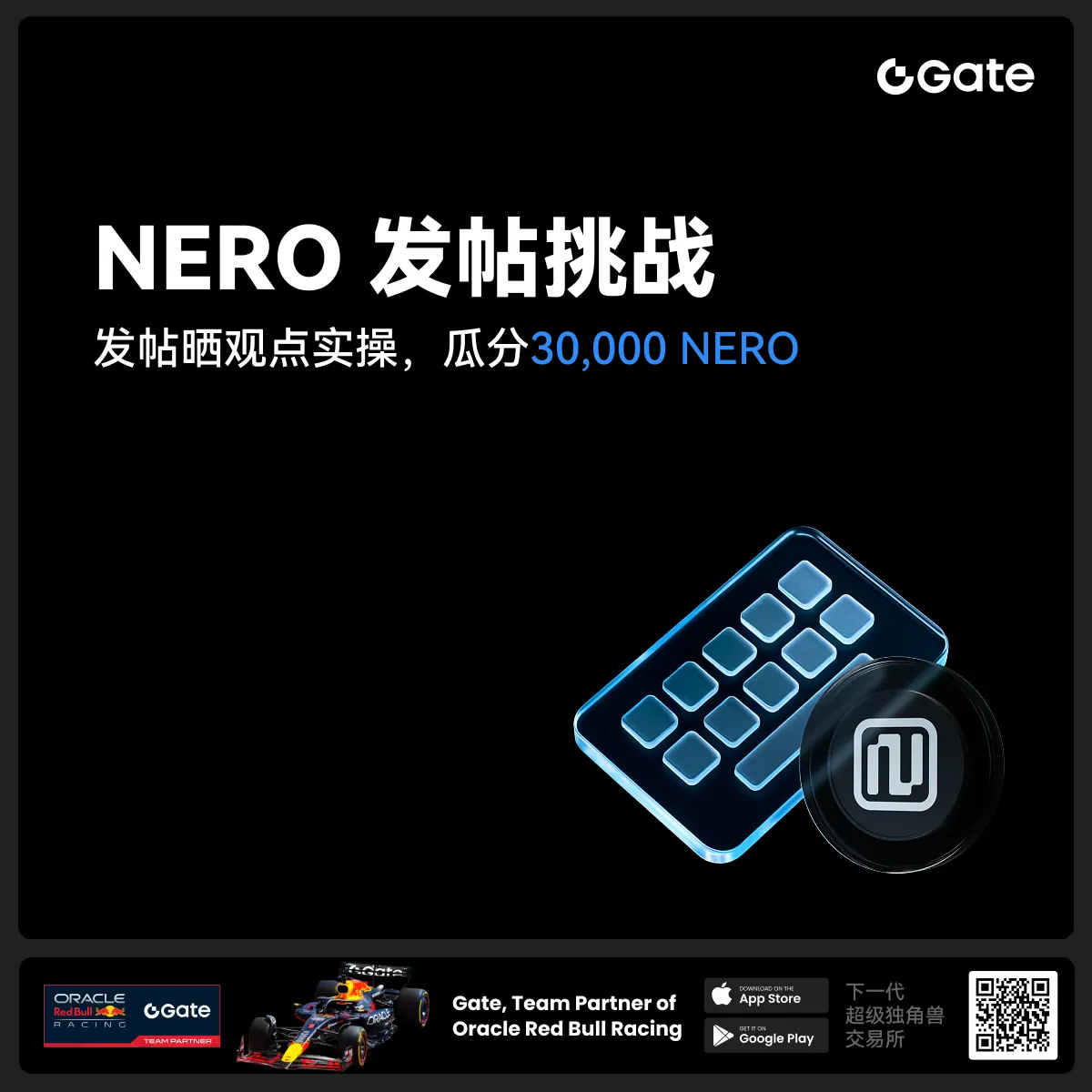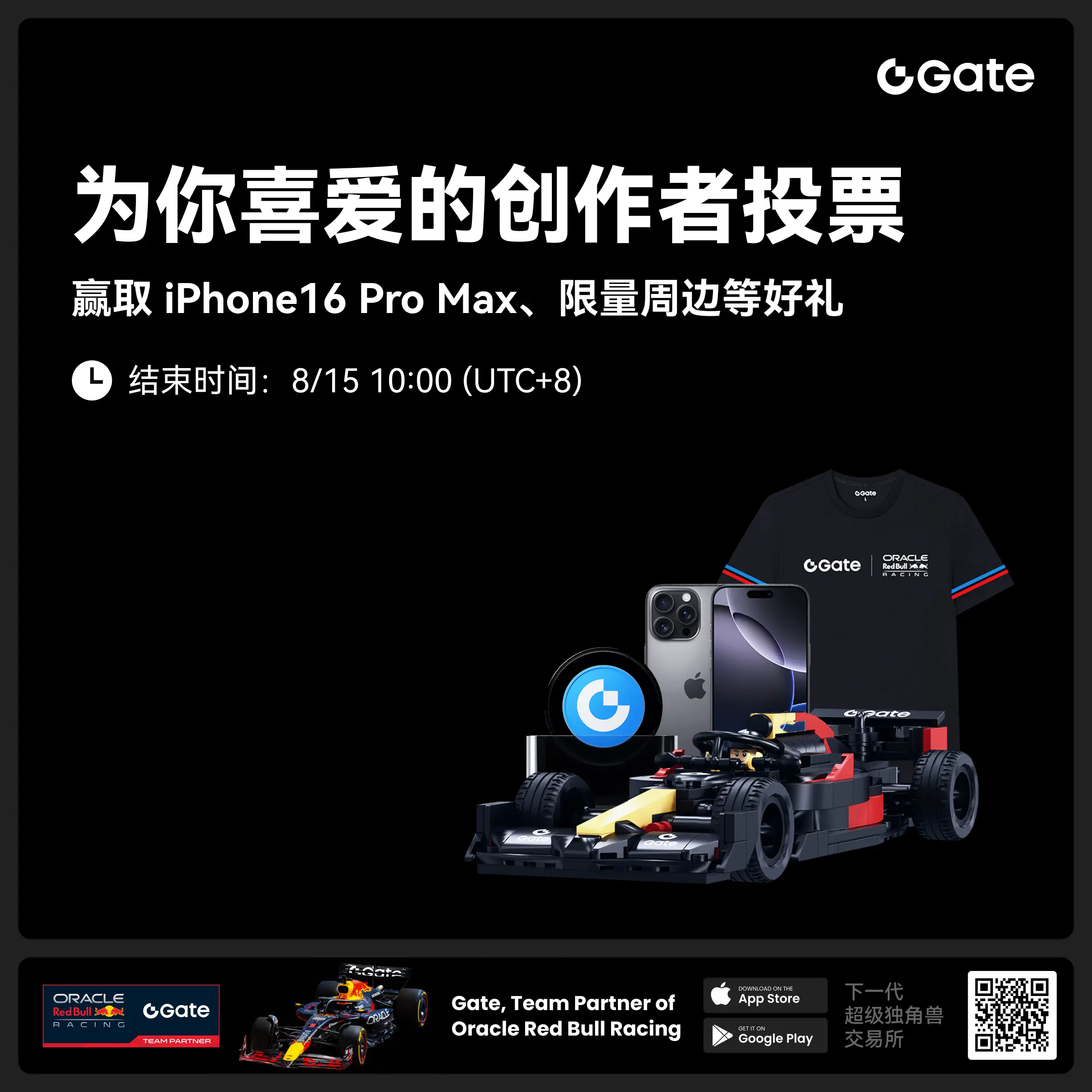- 話題1/3
53791 熱度
39115 熱度
54329 熱度
8396 熱度
22709 熱度
- 置頂
- 🎉 #CandyDrop合约挑战# 正式開啓!參與即可瓜分 6 BTC 豪華獎池!
📢 在 Gate 廣場帶話題發布你的合約體驗
🎁 優質貼文用戶瓜分$500 合約體驗金券,20位名額等你上榜!
📅 活動時間:2025 年 8 月 1 日 15:00 - 8 月 15 日 19:00 (UTC+8)
👉 活動連結:https://www.gate.com/candy-drop/detail/BTC-98
敢合約,敢盈利
- 🎉 攢成長值,抽華爲Mate三折疊!廣場第 1️⃣ 2️⃣ 期夏季成長值抽獎大狂歡開啓!
總獎池超 $10,000+,華爲Mate三折疊手機、F1紅牛賽車模型、Gate限量週邊、熱門代幣等你來抽!
立即抽獎 👉 https://www.gate.com/activities/pointprize?now_period=12
如何快速賺成長值?
1️⃣ 進入【廣場】,點擊頭像旁標識進入【社區中心】
2️⃣ 完成發帖、評論、點讚、發言等日常任務,成長值拿不停
100%有獎,抽到賺到,大獎等你抱走,趕緊試試手氣!
截止於 8月9日 24:00 (UTC+8)
詳情: https://www.gate.com/announcements/article/46384
#成长值抽奖12期开启#
- 📢 Gate廣場 #NERO发帖挑战# 秀觀點贏大獎活動火熱開啓!
Gate NERO生態周來襲!發帖秀出NERO項目洞察和活動實用攻略,瓜分30,000NERO!
💰️ 15位優質發帖用戶 * 2,000枚NERO每人
如何參與:
1️⃣ 調研NERO項目
對NERO的基本面、社區治理、發展目標、代幣經濟模型等方面進行研究,分享你對項目的深度研究。
2️⃣ 參與並分享真實體驗
參與NERO生態周相關活動,並曬出你的參與截圖、收益圖或實用教程。可以是收益展示、簡明易懂的新手攻略、小竅門,也可以是行情點位分析,內容詳實優先。
3️⃣ 鼓勵帶新互動
如果你的帖子吸引到他人參與活動,或者有好友評論“已參與/已交易”,將大幅提升你的獲獎概率!
NERO熱門活動(帖文需附以下活動連結):
NERO Chain (NERO) 生態周:Gate 已上線 NERO 現貨交易,爲回饋平台用戶,HODLer Airdrop、Launchpool、CandyDrop、餘幣寶已上線 NERO,邀您體驗。參與攻略見公告:https://www.gate.com/announcements/article/46284
高質量帖子Tips:
教程越詳細、圖片越直觀、互動量越高,獲獎幾率越大!
市場見解獨到、真實參與經歷、有帶新互動者,評選將優先考慮。
帖子需原創,字數不少於250字,且需獲得至少3條有效互動
- 🎉 親愛的廣場小夥伴們,福利不停,精彩不斷!目前廣場上這些熱門發帖贏獎活動火熱進行中,發帖越多,獎勵越多,快來GET你的專屬好禮吧!🚀
1️⃣ #GateLaunchpad上线IKA# |IKA認購體驗
在Gate廣場帶話題曬出你的IKA Launchpad認購體驗,4位幸運分享者講瓜分$200分享獎池!
詳情 👉️ https://www.gate.com/post/status/12566958
2️⃣ #ETH冲击4800# |行情分析預測
大膽發帖預測ETH走勢,展示你的市場洞察力!10位幸運用戶將平分0.1 ETH 獎勵!
詳情 👉️ https://www.gate.com/post/status/12322403
3️⃣ #创作者活动第二期# |ZKWASM話題
在廣場或推特發布與 ZKWASM 或其交易活動相關的原創內容,瓜分4,000枚ZKWASM!
詳情 👉️ https://www.gate.com/post/status/12525794
4️⃣ #Gate广场征文活动第二期# |ERA話題
談談你對ERA的觀點/體驗,參與並推廣活動,700 ERA大獎等你贏!
詳情 👉️ https://www.gate.com/post/status/12361653
5️⃣ #MBG任务挑战# |MBG話題
分享你對MBG的洞察,積極參與和推廣MBG活動,20位小 - 🎉Gate 2025 上半年社區盛典:內容達人評選投票火熱進行中 🎉
🏆 誰將成爲前十位 #Gate广场# 內容達人?
投票現已開啓,選出你的心頭好
🎁贏取 iPhone 16 Pro Max、限量週邊等好禮!
📅投票截止:8 月 15 日 10:00(UTC+8)
立即投票: https://www.gate.com/activities/community-vote
活動詳情: https://www.gate.com/announcements/article/45974
Kadena押注RWA賽道:5000萬美元激勵計劃能否重振市場關注
Kadena推出5000萬美元激勵計劃,押注RWA尋求突破
Kadena這家成立於2016年的公鏈近期宣布了一項高達5000萬美元的激勵計劃,似乎意在通過當前熱門的RWA賽道重新獲得市場關注。在經歷了一段沉寂期後,Kadena的這一系列新動向引發了業界廣泛討論。本文將深入分析Kadena近期的戰略部署、發展歷程及其獨特技術架構,探討此次大規模激勵計劃能否爲其帶來新的發展機遇,以及其在RWA領域的潛力。
金融精英打造"可編程POW"新秀
Kadena的發展與金融巨頭有着密切聯繫。該項目由Stuart Popejoy和Will Martino於2016年共同創立,兩位創始人此前均在某大型銀行任職。在創立Kadena之前,Stuart Popejoy曾領導該銀行的區塊鏈卓越中心,負責核心分布式帳本基礎設施的開發,並創建了開源區塊鏈項目Juno。Will Martino則擔任Juno項目的首席工程師,並曾在某監管機構的加密貨幣指導委員會擔任技術主管。他們參與開發了該銀行間流通的數字穩定幣的第一個版本基礎架構。
這種源於傳統金融內部的區塊鏈實踐經驗,使得Kadena從一開始就帶有"企業級"或"機構級"的設計理念。
Kadena的核心技術創新在於其獨特的Chainweb架構,這是一種可擴展的、多鏈並行的工作量證明(PoW)共識機制。Chainweb並非單一的區塊鏈,而是由多條獨立的、同時運行的對等鏈通過"編織"方式相互連接而成的網路。每條鏈都獨立挖礦,並能夠並行處理交易。這種設計方式也與市面上其他類型的POW鏈有着較大的區別,因此,Kadena將自己定位爲唯一一個可編程的L1。
在這種設計架構下,理論上有着極高的吞吐量,2020年,在擴展20條鏈的情況下,Kadena曾聲稱理論TPS達到了48萬。這一數據值遠超同期的其他公鏈,包括以速度著稱的某高性能公鏈。
借助金融背景的光環和技術優勢,Kadena在成立以來曾一度成爲公鏈中的明星。2021年,其代幣最高價格漲至27美元,相比2020年初期的0.2美元上漲了100多倍,市值一度接近40億美元。此外,Kadena網路在上線初期也迅速擴展至20條鏈,成爲當時最快的POW公鏈。
豪賭RWA:5000萬激勵能否破局?
不過,Kadena的輝煌隨着2021年的牛市結束也煙消雲散。自2021年後,其價格大幅下跌,市值也跌至僅有1.5億美元左右。其官方博客自2023年後也不再更新,社交媒體上也很少聽到Kadena的新聞動態。
2025年5月20日,Kadena宣布啓動一項總額5000萬美元的激勵計劃,旨在推動Chainweb EVM、RWA代幣化以及人工智能驅動的區塊鏈解決方案的發展。這一消息也讓市場再次關注到這個老牌公鏈。是否也將像曾經的某公鏈一樣開始重塑品牌?
根據官方的資料顯示,這5000萬美元總資金池中的2500萬美元將專門用於支持合規的RWA代幣化項目。剩餘的2500萬美元將用於支持在Kadena多鏈EVM兼容網路(Chainweb EVM)上構建的項目以及AI集成項目。這項資助爲非股權資金支持,意味着受資助的項目無需出讓股權。
Kadena新激勵計劃的首個RWA領域受資助者是英國的CurveBlock公司,該公司於2025年6月獲得了40萬美元的資助。CurveBlock成立於2018年,是一家專注於可持續房地產投資的英國房地產科技初創公司。從背景來看,CurveBlock是首家被接納進入英國數字證券沙盒(DSS)的房地產公司。這也意味着CurveBlock之所以能夠成爲Kadena的首個資助對象其背後的原因與合規有着密不可分的緣由。
此外,Kadena提出除了提供資金支持之外,還會提供技術援助、項目發展建議、市場營銷與推廣等。
不過,Kadena官方並未提出每家受資助的企業會獲得多少具體的金額,也沒有公布受資助的具體標準,截至目前公開的受資助企業僅有CurveBlock一家。
RWA是市場近年來的一個熱門賽道,不少的老牌公鏈都在借助這一敘事積極尋求轉型,比如某公鏈近期也是在往這個方向拓展。Kadena除了推出激勵計劃之外,同時也在近期開發了基於其原生智能合約語言Pact的RWA代幣標準,該標準參考了以太坊的EIP-3643。此標準旨在強制執行鏈上權限和監管控制,支持合規的資產發行、交易和贖回。
前有1億美元激勵折戟,資助計劃落地成難題
不過,Kadena官方推出的5000萬美元激勵計劃並不是首次。在2022年,面臨整體市場下滑,關注度減少的階段當中。Kadena也曾推出過總額高達1億美元的激勵計劃,在那次激勵當中,Kadena對遊戲、元宇宙、NFT、Web3、DeFi和DAO等項目在Kadena生態系統中的發展和採用進行資助。
根據Kadena官方在2022年底的年度回顧,該1億美元激勵計劃收到了"壓倒性的關注和數百份申請",其"首批受資助者共有9個項目",其中一些已經"取得了非凡的成就"。翻看後續的每季度總結,能看到該計劃陸續公布了一些項目,不過最終並未找到關於該激勵計劃的總體情況說明,在每次的受資助項目公布時也沒有提及具體的資助金額。
從數據的表現來看,這次1億美元的激勵計劃並未能提升Kadena的市場關注度和社區活躍度。一方面其價格仍處於一路下滑,另一方面網路上僅有能看到的TVL相關數據在2023年最低跌至數十萬美元。截至6月13日,其TVL也僅有94萬美元,穩定幣市值約爲18萬美元。
回到現在的這次5000萬美元的激勵計劃,與2022年相比,推出的市場週期也極爲相似。都是在牛市的第一個高峯之後。只是我們目前也無法預測後續的市場週期走勢是復刻2021~2022年的整體走熊還是打開新的一輪更大的市場週期。不過,從某種程度來說,Kadena的這種激勵措施如果遇到與2022年類似的市場走勢,或許將迎來又一次的"竹籃打水"。
此外,與其他公鏈直接對用戶進行激勵不同,Kadena的激勵更多的是面向項目方,在缺少用戶量的情況下,項目方僅僅爲了並不確定的激勵選擇Kadena或許面臨更大的投入風險。而細觀Kadena推出的一些面向用戶的推廣計劃,其激勵的內容是至少進行4周的推廣,然後進行抽獎,其中50名幸運兒能獲得40枚KDA。按照目前KDA 0.48美元的價格計算,用戶一個月的推廣最終還不一定能獲得20美元的獎勵,這種激勵的性價比多少顯得有些雞肋。
因此,雖然RWA的敘事是熱門的,5000萬美元的激勵是巨額的,但似乎Kadena眼下需要思考的是通過更顯誠意的方式獲得市場和社區的認可。否則,這一次的5000萬美元激勵,或許又將是雷聲大雨點小的結局。